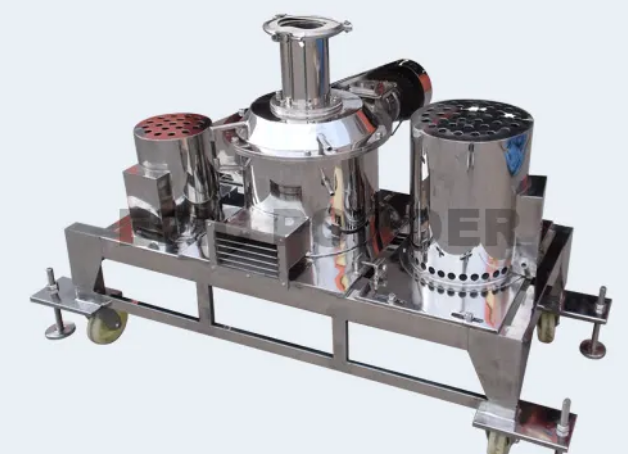The impact classifier mill stands as a revolutionary piece of equipment in the world of milling and particle refinement. This unique system, widely known for its specialized role in the industry, fuses the functions of grinding and classification, achieving a level of efficiency and precision that traditional mills strive to attain.
Anatomy of the Impact Classifier Mill
At the heart of the impact classifier mill is the integration of an impact mill and a dynamic air classifier in a single housing. The process begins when materials are fed into the milling chamber. Here, they are subjected to a series of high-speed impacts emanating from rotating hammers, a method of raw material breakdown that is distinct from cutting or crushing.
As particles undergo a reduction in size, a critical transition unfolds. An integrated dynamic air classifier, operating on the principle of counterflow, ensures that only materials meeting specific size parameters progress to the collection phase. Those that do not conform are reintroduced into the milling chamber, a process that continues until the exact specifications are met.
Distinctiveness and Efficiency: The Dual Advantage
What sets the impact classifier mill apart is its adaptability in producing ultra-fine particles, which becomes a high priority in various sectors. The synergy between impact grinding and air classification within a single system enhances the precision in particle size distribution, a factor that industries with stringent standards find invaluable.
Efficiency underscores this innovative milling solution. The unified approach to grinding and classifying translates into a reduction of energy usage and operational costs. It eliminates the need for separate equipment and processes, therefore streamlining production workflows.

Indispensable Ally of Diverse Industries
The relevance of the impact classifier mill stretches across several industries. Its precision in achieving desired particle sizes is vital in pharmaceutical manufacturing, where consistency in medical formulations is non-negotiable. Similarly, in the food and chemical industries, the ability to control texture and particle size impacts product quality, safety, and functionality.
Navigating the Technical Landscape
Operating an impact classifier mill requires a blend of expertise and diligence. The sophisticated nature of the equipment demands personnel adept in calibrating the delicate balance between air classification and material impact. Furthermore, the system’s high-speed operations necessitate an ongoing commitment to maintenance to prevent operational disruptions and ensure longevity.
Impact Classifier Mill: A Nexus of Innovation
The Classifying mill, particularly the impact variant, is more than a technological advancement in the milling sector. It embodies the relentless pursuit of quality and efficiency in material processing. As industries evolve and standards heighten, the impact classifier mill is poised not just to meet these needs but to redefine expectations. Investing in this technology is synonymous with steering a path toward innovation, excellence, and the future-readiness of operations within various industrial domains.